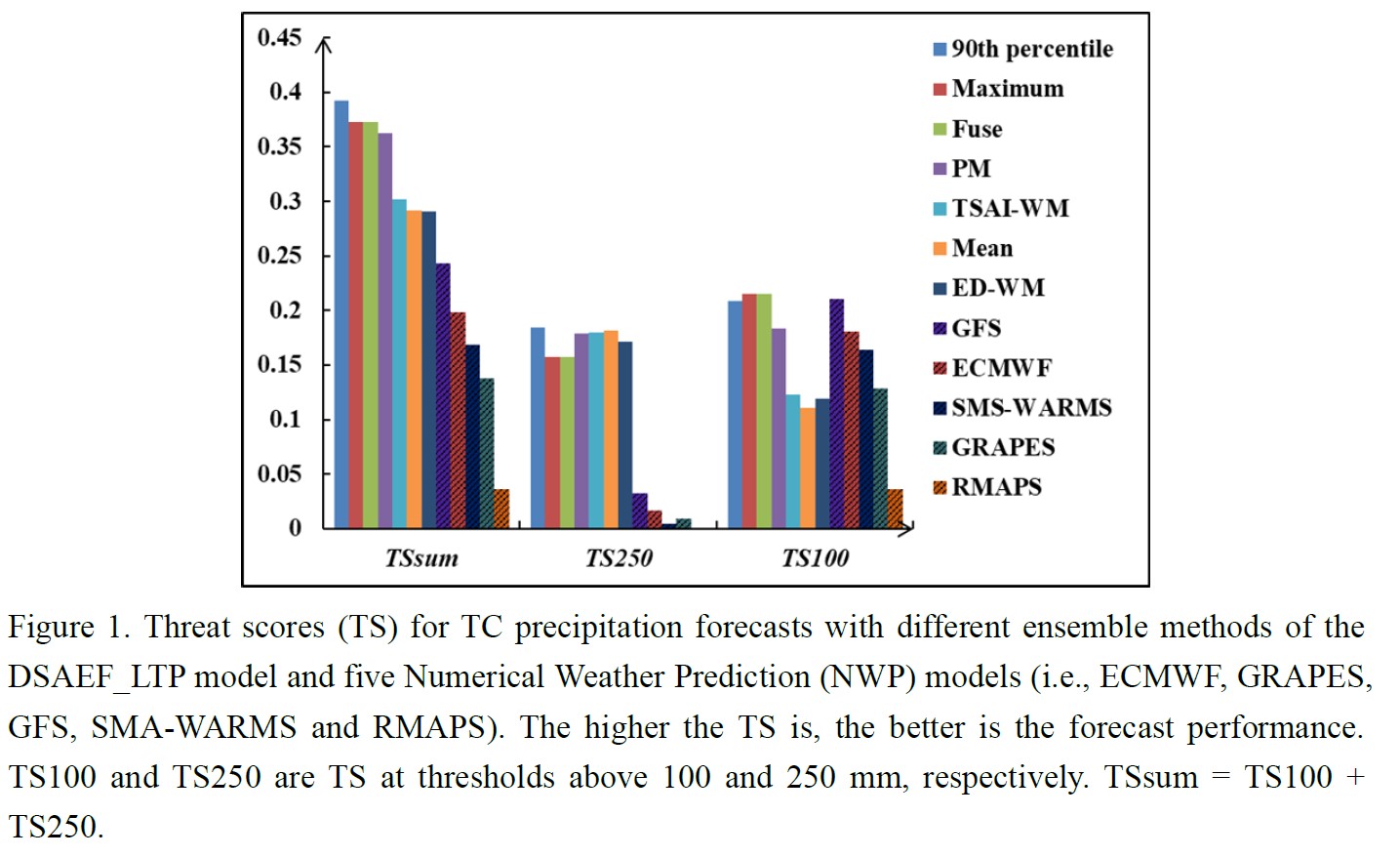Graphical Abstract
Li, J., F. Ren, C. Ding, Z. Jia, M. Wang, Y. Chen, and T. Feng, 2022: Improvement of the ensemble methods in the dynamical–statistical–analog ensemble forecast model for landfalling typhoon precipitation. J. Meteor. Soc. Japan, 100, 575-592.
https://doi.org/10.2151/jmsj.2022-029
Graphical Abstract
Published
Plain Language Summary: The Dynamical–Statistical–Analog Ensemble Forecast model for landfalling typhoon precipitation (the DSAEF_LTP model) identifies tropical cyclones (TCs) similar to the target TC and then assembles the precipitation of them to get the precipitation forecast for the target TC. Two original ensemble methods in the DSAEF_LTP model, namely, mean and maximum, tend to under- and over- forecast TC precipitation, respectively. To improve the forecast performance of the DSAEF_LTP model, the following five new ensemble methods are incorporated: optimal percentile, fuse, probability-matching mean (PM), equal difference-weighted mean (ED-WM), and TC track Similarity Area Index-weighted mean (TSAI-WM). Experiments show that the overall performance of the optimal percentile (the 90th percentile) ensemble method is superior.
Highlights:
- The 90th percentile ensemble method performs best in TC precipitation forecasts of the DSAEF_LTP model.
- Compared with the five NWP models, the DSAEF_LTP model with the new ensemble methods performances better.
- The forecast performance of the DSAEF_LTP model can be further improved by applying different ensemble methods to TCs with different track types.







